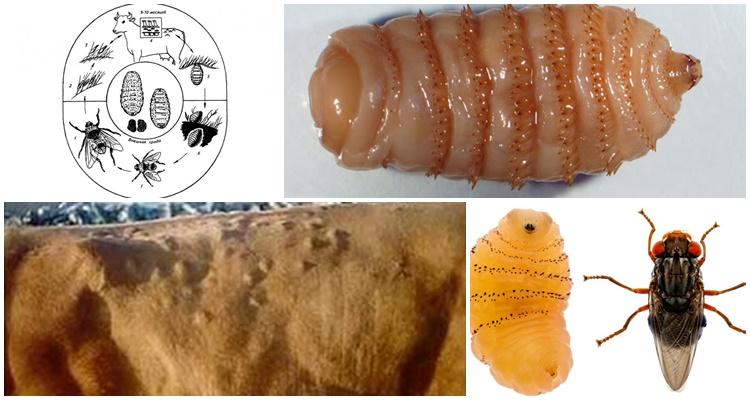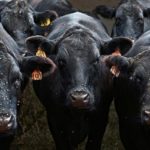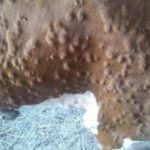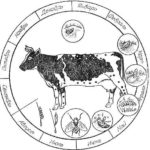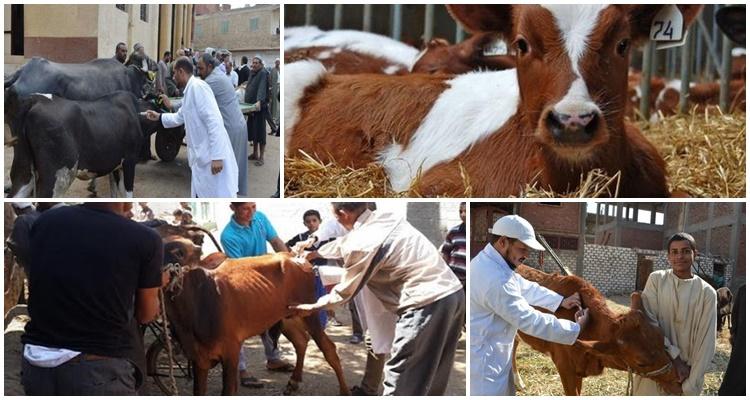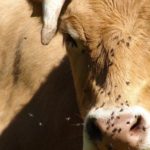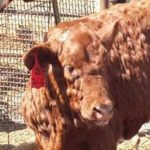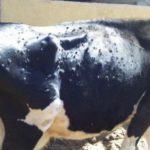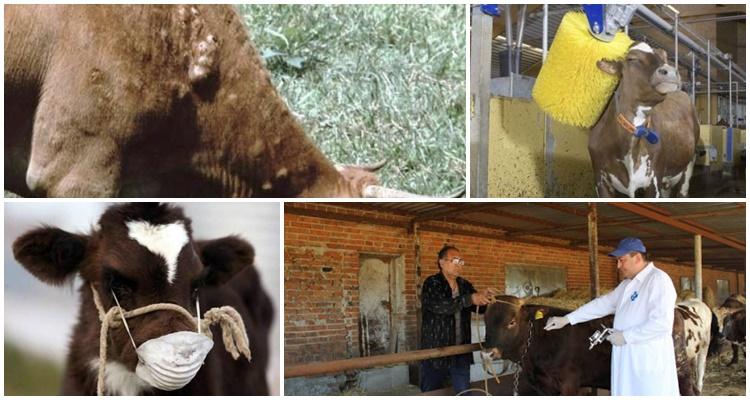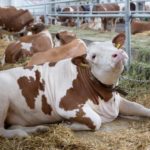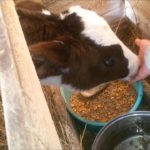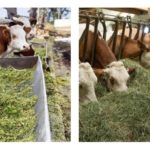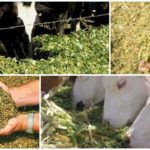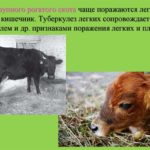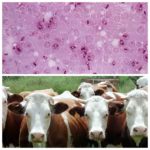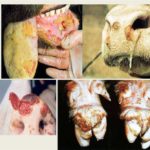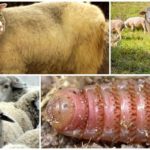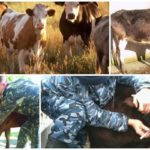Parasitic diseases can cause significant harm to livestock production, affecting cattle, and also occurring in people who come into contact with farm animals. Most often, herds suffer from bovine hypodermatosis, which can cause significant material losses for livestock producers, as well as dangerous injuries to people.
For what reason does the disease occur?
Cattle hypodermatosis is a type of parasitic disease - entomosis, that is, a disease caused by the penetration of insect larvae into the body tissues, cavities and organs of humans and animals. The cause of bovine hypodermatosis is gadflies (“cattle flies”) of two varieties:
- Common subcutaneous gadfly.
- Southern subcutaneous gadfly, or esophagus.
Both species are dipterous flying insects that reach 15 millimeters in adulthood. They are capable of laying up to 800 eggs, mainly affecting cattle, but also posing a threat to people involved in livestock farming or living in areas with large concentrations of cattle.
Insects lay eggs on animal fur, choosing areas where it is thickest - this makes it easier for them to cling to the body. Then, after 5 days, the first-stage larvae hatch from the eggs and penetrate into the flesh of the animal, moving along the vessels and nerve endings towards the spine. There they penetrate the spinal canal and remain there for six to 9 months in the second stage.
After the specified period, they gnaw their way out, forming fistulas. After a day or three they turn into pupae.
Symptoms of the disease
Gadfly bites are extremely painful, so animals react to the very approach of insects and to their attacks with increased nervousness, they can shy away and make sounds.When the larvae of gadflies gnaw passages on the body of a cow or other animal, lumpy formations with inflammation of the surrounding tissues, exudate and suppuration become noticeable under the surface of the skin.
When mature larvae gnaw their way out, they leave behind holes from the resulting fistulas, which fester and become inflamed, causing severe suffering to the livestock.
Cattle hypodermatosis leads not only to externally noticeable signs of damage, but also causes a decrease in milk yield, body weight gain, disturbances in appetite and behavior, provoked by insect attacks and the actions of larvae. If there are too many of them in the spinal canal, this can lead to muscle paresis and paralysis of the limbs, as well as the death of animals.
How to diagnose the problem
When diagnosing cattle hypodermatosis, it is necessary to distinguish its signs from damage by other parasites, scratches, ulcers, bites, and injuries. Diagnosis is carried out during the period of activity of gadflies, that is, from March to October.
Particular attention is paid to young animals that were born before May, as well as to those animals that are kept for fattening.
Only a veterinarian with considerable experience can understand the manifestations of various diseases, so examinations should be carried out regularly, because the only external significant sign of invasion is the presence of bumps on the back and lower back of cattle.
But treatment is effective during the formation of the first stage larvae, so prevention in the form of frequent examinations is the most useful method of combating hypodermatosis infestation in cattle.
Treatment of hypodermatosis in cattle
The treatment procedure is divided into two stages associated with the periods of development of pests in the body of livestock:
- The first treatment is carried out from mid-September to mid-November. In fact, it is a preventive measure, since it allows you to protect the herd from further spread of gadflies by killing adult larvae. The insecticides “Chlorophos” or “Hypodermin-Chlorophos” are used for it. They are applied with an automatic sprayer along the spine of cows and calves if more than 5 fistulas from gadfly tracts are found on their body.
- The second stage is carried out from early March to September to exterminate larvae in the second and third stages of development. Areas of skin with bumps and fistulas on them are treated for -2 weeks to make sure that the medicine has worked and no new bumps have appeared. In the latter case, the processing will have to be repeated.
An almost 100% guarantee of the death of larvae of all ages is provided by the use of antiparasitic drugs based on ivermectin. Treatment with organophosphorus preparations based on chlorophos works just as well. All these products are prohibited for use on cows during lactation, as they pass into the milk.
Damage to livestock
Each subcutaneous gadfly is capable of laying several hundred eggs, which leads to massive damage to domestic animals. This means that any herd could be affected, including huge numbers of cattle raised on an industrial scale for meat and hides, as well as animals from individual farms of farmers and villagers.
When infected with botflies, animals' appetite sharply decreases, which means that they gain weight more slowly, produce milk less well, and later enter the stage of puberty. Herd owners suffer enormous losses due to a shortage of products and the death of cows and other animals caused by bovine hypodermatosis.
Consequences
Cattle hypodermatosis has the following consequences:
- The reduction in milk yield in a dairy herd can reach 40-60%. During treatment, it is impossible to use the resulting milk for food and for feeding calves and other young animals.
- Damage to the skin from lumps and fistulas due to gadflies leads to a depreciation of the value of these products, which can ruin an enterprise focused on this or cause significant material damage to it.
- Young animals being fattened for slaughter suffer from poor appetite, are anxious and nervous. The result is a shortage of mass, and the farm will lose part of the planned profit.
- With severe damage, many animals may die, which threatens ruin.
- Enterprises specializing in the sale of young breeding animals are losing their income due to the ban on the export of livestock from areas affected by gadflies.
All these factors indicate the need for a systematic fight against bovine hypodermatosis as a source of great damage to the national economy of the country.
Prevention measures
It is extremely difficult to avoid infection with gadflies, but you can try to reduce the damage they cause and reduce the incidence of bovine hypodermatosis. To do this, you need to do the following:
- Purchased animals must be treated with special preparations against cattle hypodermatosis before being allowed into the premises or for walking where the rest of the herd is kept.
- Carry out preventive treatment in autumn-winter to destroy the first stage larvae.
- Do not graze affected livestock and do not sell animals with signs of bovine hypodermatosis to other areas.
- Burn manure from a sick herd, released during the active emergence of mature larvae.
- Maintain cleanliness in premises and pastures, avoid large concentrations of animals on small plots of land.
Since subcutaneous gadflies are distributed everywhere, with the exception of the Far North, it is difficult to avoid infection. The only effective way is preventive treatment of young animals and the entire herd with specialized drugs.
Danger to humans
Cattle hypodermatosis is a disease dangerous to humans. Most often, infection occurs through contact with sick animals or while in an area with large concentrations of cattle, for example, on pastures, farms, and in areas where subcutaneous gadflies are widespread.
Infection occurs according to the following scheme:
- Female botflies lay eggs by attaching them to the hair on their head or body.
- The hatched larvae of the first stage of development penetrate into the subcutaneous fatty tissue and move along it over considerable distances. They can travel up to 12 centimeters in half a day. At the first stage of infection, this occurs painlessly and is hardly noticeable for the victim.
- The next stage as the larvae move, as they move up the body, are bluish or reddish inflamed marks on the skin, which disappear in the same place in a couple of days, and then appear again, but on a higher area of the skin.
- Having advanced to the area of the shoulder blades, shoulders, neck and head, the larvae move on to the next stage. They molt, forming a special chamber around themselves, like a pupa, protecting them from external influences. The capsule is filled with liquid, and after a couple of days it is opened with a fistula. The hole is necessary to allow air to flow to the larva.
- There may be several larvae if a person has been bitten repeatedly.
The disease is characterized by severe itching, inflammation and the spread of infection. If only the skin and subcutaneous fatty tissue are affected, the gadfly larvae can be removed surgically. It is much worse if the penetration occurs in the area of the eyes, nose, ear canal, or mucous membranes. This can cause many dangerous diseases, including the development of blindness, deafness, and death if the larva gets into vital organs, for example, the liver, lungs, brain or spinal cord.
In the absence of pronounced external signs, bovine hypodermatosis in humans can be diagnosed by serological reactions, since when the larvae enter the body, specific antibodies begin to be produced.
Treatment consists of surgical removal of gadfly larvae, taking Ivermectin orally, and using Aversectin in the form of an ointment for external use to areas of local distribution of parasites. The impact must be comprehensive, carried out as prescribed and under the supervision of a doctor, since the drugs are toxic and have a list of contraindications and side effects. Cattle hypodermatosis is a disease that threatens the health and life of not only livestock, but also people, so it must be combated with all available methods.

